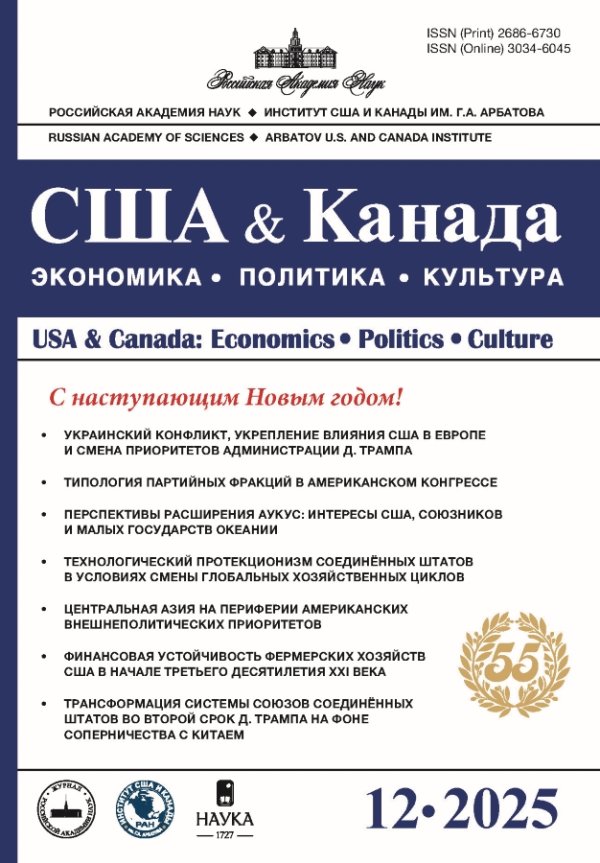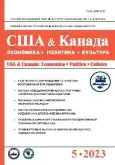US military spending: the real size and reasons for the overstatement
- Authors: Anureev S.V.1
-
Affiliations:
- Financial University under the Government of the Russian Federation
- Issue: No 5 (2023)
- Pages: 77-104
- Section: Military Policy
- URL: https://journals.rcsi.science/2686-6730/article/view/144815
- DOI: https://doi.org/10.31857/S2686673023050103
- EDN: https://elibrary.ru/CJJIVF
- ID: 144815
Cite item
Full Text
Abstract
About the authors
Sergey V. Anureev
Financial University under the Government of the Russian Federation
Email: anureev@bk.ru
Russian Federation, Moscow
References
- Бабич С.Н. Трансформация расходов федерального бюджета США на национальную оборону (2017-2022 фин.гг.). Россия и Америка в XXI веке. 2021. №4. doi: 10.18254/S207054760017780-5
- Викулов С.Ф., Горгола Е.В. Политико-экономический анализ макроэкономических аспектов военно-экономических отношений в условиях современного противостояния РФ и США, или еще раз о главных либеральных мифах. Национальные интересы: приоритеты и безопасность. 2019. Т. 15, № 4. С. 596-628. https://doi.org/10.24891/ni. 1 5. 4. 596
- Климович П.В., Сплендер В.А. Финансовое обеспечение военного присутствия подразделений армии США в Азиатско-Тихоокеанском регионе. Военный академический журнал. 2022. №2, с.161-169. EDN: WMSWMC
- Лукьянович Н.В. Региональная и страновая специфика мировых военных расходов. Учёные записки Крымского федерального университета имени В.И.Вернадского. Экономика и управление. 2019. Т.5 (71). №3. С.112-119.
- Bilmes Linda. The Long-Term Costs of United States Care for Veterans of the Afghanistan and Iraq Wars. August 18, 2021. Costs of War Research Series. Watson Institute, Brown University. Available at: https://watson.brown.edu/costsofwar/files/cow/imce/papers/2021/Costs%20of%20War_Bilmes_Long-Term%20Costs%20of%20Care%20for%20Vets_Aug%202021.pdf (accessed 31.01.2023).
- Harper Jon. Pentagon Personnel Costs at Historic High. National Defense Magazine. Oct. 19, 2021. Available at: https://www.nationaldefensemagazine.org/articles/2021/10/19/pentagon-personnel-costs-at-historic-high (accessed 31.01.2023).
- Hartung William. Profits of War: Corporate Beneficiaries of the Post-9/11 Pentagon Spending Surge. A Costs of War Research Series. Watson Institute. Brown University. September 13, 2021. p.3. Available at: https://watson.brown.edu/costsofwar/files/cow/imce/papers/2021/Profits%20of%20War_Hartung_Costs%20of%20War_Sept%2013%2C%202021.pdf (accessed 31.01.2023).
- Peltier Heidi. Eight Things You Should Know About Defense Spending and Inflation. Cost of War Series. Watson Institute, Brown University. May 3, 2022. Available at: https://watson.brown.edu/costsofwar/files/cow/imce/papers/2022/Peltier%20-%20May%203%202022%20-%208%20things%20you%20should%20know%20about%20defense%20spending%20and%20inflation.pdf (accessed 31.01.2023).
- Peltier Heidi. The Growth of the "Camo Economy" and the Commercialization of the Post-9/11. Cost of War Series. Whatson Institute of International and Public Affairs. Brown University. June 30, 2020. Available at: https://watson.brown.edu/costsofwar/files/cow/imce/papers/2020/Peltier%202020%20-%20Growth%20of%20Camo%20Economy%20-%20June%2030%202020%20-%20FINAL.pdf (accessed 31.01.2023).
- Smithberger Mandy. The United States needs to cut military spending and shift money to two pressing threats: pandemics and climate change. The Bulletin of the Atomic Scientist. September 7, 2021. Available at: https://thebulletin.org/premium/2021-09/the-united-states-needs-to-cut-military-spending-and-shift-money-to-two-pressing-threats-pandemics-and-climate-change/(accessed 31.01.2023).
Supplementary files










